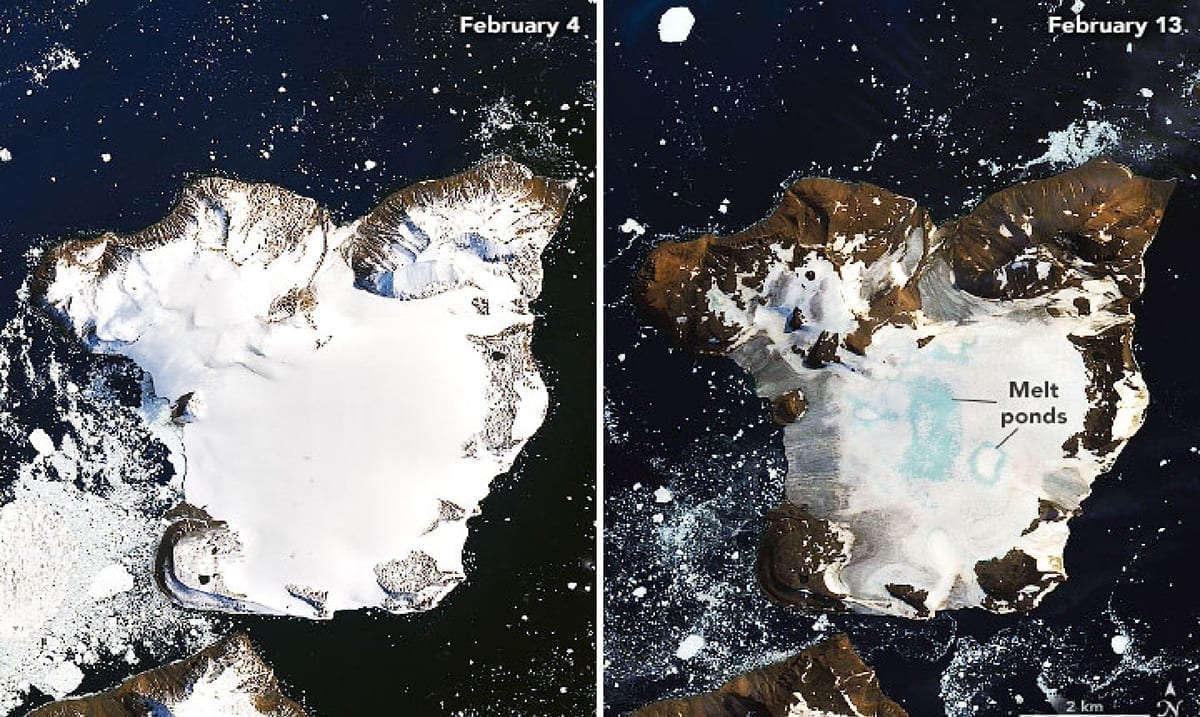While scientists have been monitoring heatwaves and other things of the sort for a long time now, this one is the first-ever recorded in this part of Antarctica. This was recorded by researchers at the Casey Research Station who happen to be from the Australian Antarctic Program.
Basically, between the 23rd and 26th of January when the region faces it’s ‘summer’ season, these researchers noticed a heatwave. While it was a mere three days it seemed these researchers were recording what was easily the highest temperatures ever in that area. At Casey according to CNN temperatures hit a record of 9.2 degrees Celsius or 48.6 degrees Fahrenheit on January the 24th.
CNN reported as follows on the topic:
Antarctic ecologist Dr. Dana Bergstrom warned the warm summer could result in long term disruption to local populations, communities, and pose a threat to the broader ecosystem.
“Most life exists in small ice-free oases in Antarctica, and largely depends on melting snow and ice for their water supply,” Bergstrom said.
“Meltwater flooding can provide additional water to these desert ecosystems, leading to increased growth and reproduction of mosses, lichens, microbes, and invertebrates.
“However excessive flooding can dislodge plants and alter the composition of communities of invertebrates and microbial mats,” she said.
“If the ice melts completely, early in the season, then ecosystems will suffer drought for the rest of the season,” Bergstrom warned.
Record temperatures have been documented across Antarctica during the continent’s summer season.
As you might assume temperatures above zero seem to make the ice melt a lot quicker. Research on this was recently published in Global Change Biology and it goes over this heatwave in great detail. Things like this happening in the coldest place on Earth should be alarming for all.
The part of the abstract of this research is listed as follows:
The 2019/2020 summer of Antarctic heatwaves –
This summer, a heatwave across Antarctica saw temperatures soar above average. Temperatures above zero are especially significant because they accelerate ice melt. Casey Station had its highest temperature ever, reaching a maximum of 9.2°C and minimum of 2.5°C. The highest temperature in Antarctica was 20.75°C on 9 February. Here we discuss the biological implications of such extreme events.
Extreme events associated with global change are predicted to increase in frequency and become more impactful. As we come to the end of the hottest decade ever recorded, recent weather events have once again been unprecedented. Significant attention has rightly focused on drought and heatwaves resulting in unprecedented fires in Australia (Nolan et al., 2020), delays to Indian monsoonal rains followed by flooding and the extreme winter warming in the Northern Hemisphere high latitudes.
However, the Antarctic summer has also broken records.
Now, from there the findings go over a lot and are very much worth checking out for yourself which you can do by clicking here. While there are possible ideas as to what is behind all of this more research needs to be done. Things like this do not just come out of nowhere, even if it may look that way to some.
Brisbane Times wrote as follows on this heatwave:
The success of global efforts to reduced ozone-depleting chlorofluorocarbon chemicals (CFCs) was one of the reasons for this summer’s exceptional warmth along with the background climate warming.
As the ozone hole over Antarctica has closed, the strong westerly winds have abated, allowing the rising temperatures to reach regions – such as Casey station – that had previously been shielded, Professor Robinson said.
The past summer’s heatwave “is probably a harbinger of the future, as we have stopped production of CFCs”, she said. “A lot people think of Antarctic as pristine and protected but climate change gets everywhere, so it’s not protected.”
What do you think could be done to help prevent things like this in the future? While it might not sound like a big deal, it is. Heatwaves like this could cause serious effects on life in Antarctica and in time change more than just that.

